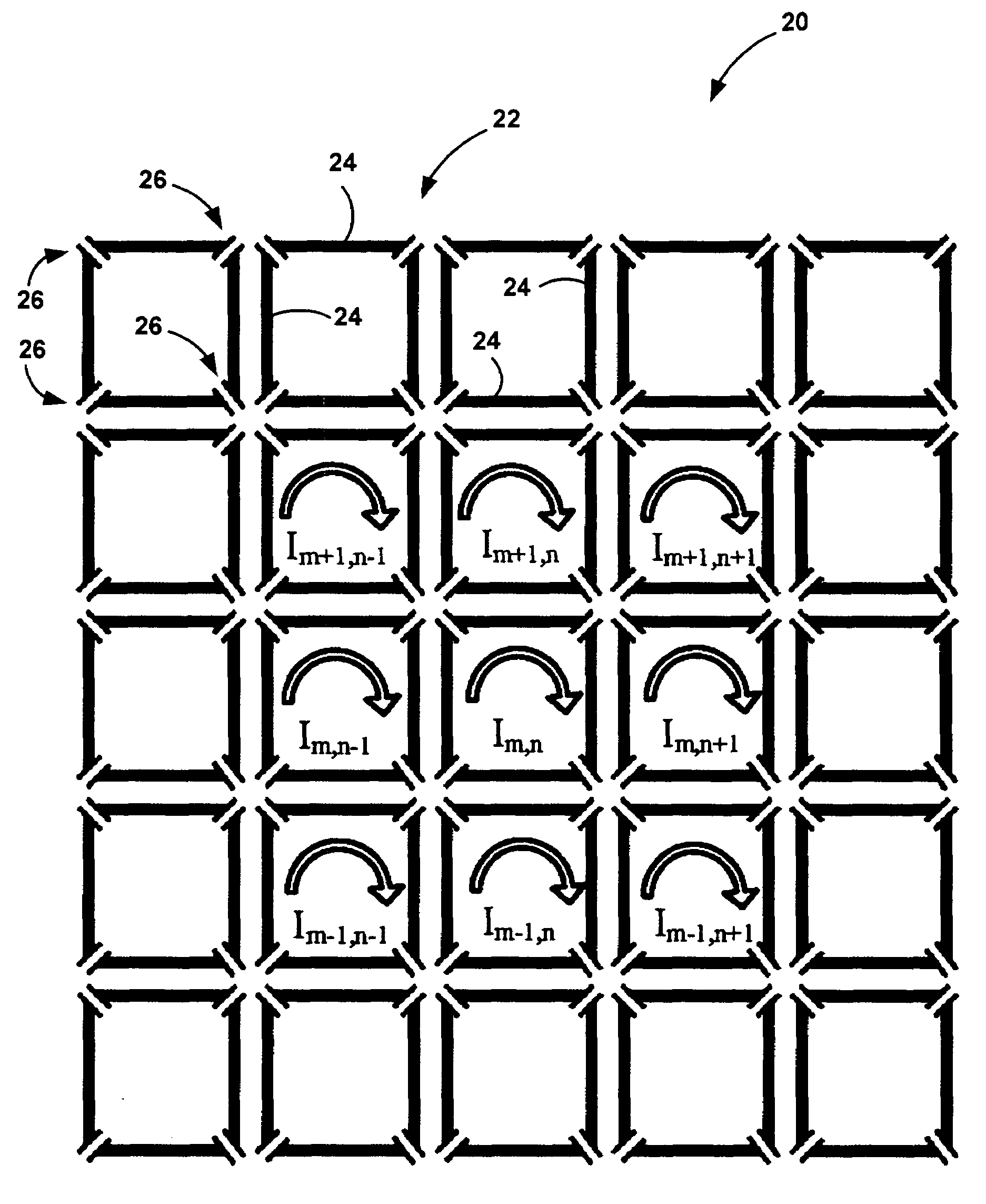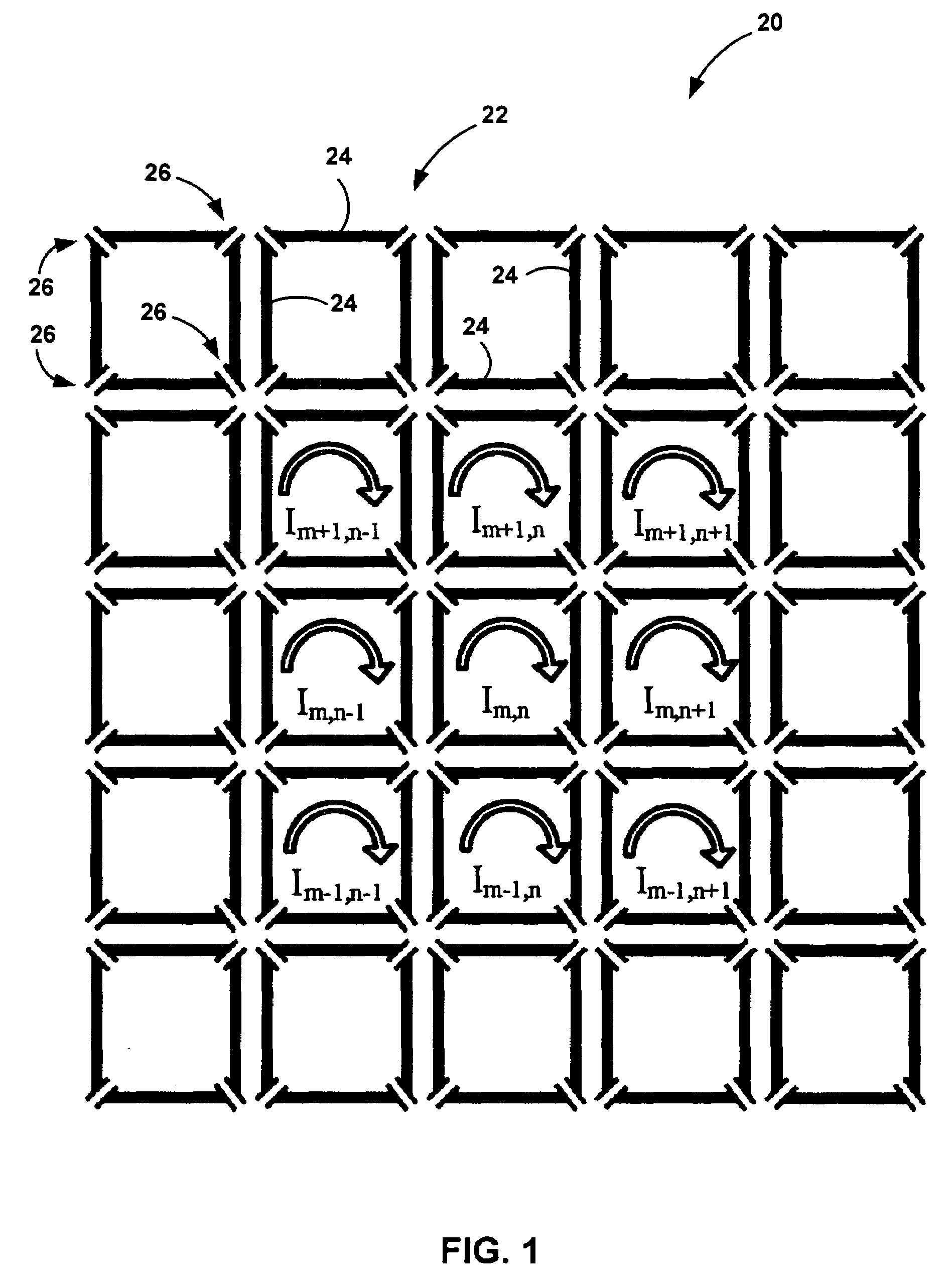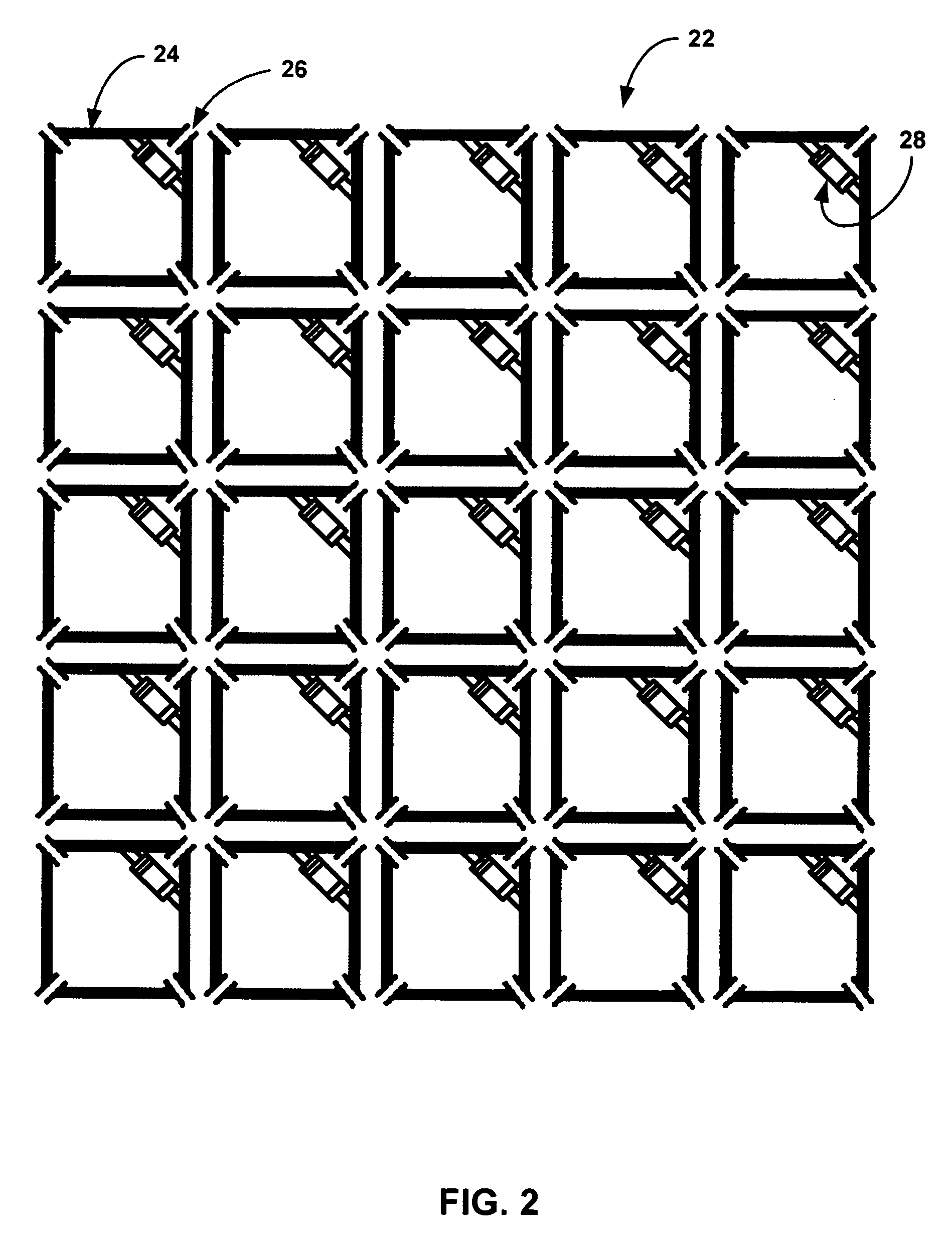High-pass two-dimensional ladder network resonator
a ladder network and resonator technology, applied in the field of radio frequency resonators, can solve the problem of limited application in the higher field of these structures
- Summary
- Abstract
- Description
- Claims
- Application Information
AI Technical Summary
Benefits of technology
Problems solved by technology
Method used
Image
Examples
Embodiment Construction
[0044]The invention provides a high-pass two-dimensional ladder network where the next-to-highest eigenvalue corresponds to a normal mode giving rise to B1 fields with good spatial homogeneity above the resonator plane. As such, it can be utilized for linear or quadrature operation with a B1 profile suitable for imaging applications and security applications.
[0045]Turning now to the figures, wherein like reference numerals refer to like elements, an embodiment of the invention is illustrated in FIG. 1. The high-pass two-dimensional ladder network 20 of FIG. 1 is shown as a 5×5 collection of inductively coupled resonators. The resonators are only inductively coupled and do not share any common leg between resonators and may partially overlap other resonators. Each resonator 22 in FIG. 1 is represented by conducting strips 24 having a self inductance L, joined by a capacitor 26 having a capacitance having a value C at each corner. In some applications, the capacitance value may be non...
PUM
 Login to View More
Login to View More Abstract
Description
Claims
Application Information
 Login to View More
Login to View More - R&D
- Intellectual Property
- Life Sciences
- Materials
- Tech Scout
- Unparalleled Data Quality
- Higher Quality Content
- 60% Fewer Hallucinations
Browse by: Latest US Patents, China's latest patents, Technical Efficacy Thesaurus, Application Domain, Technology Topic, Popular Technical Reports.
© 2025 PatSnap. All rights reserved.Legal|Privacy policy|Modern Slavery Act Transparency Statement|Sitemap|About US| Contact US: help@patsnap.com



